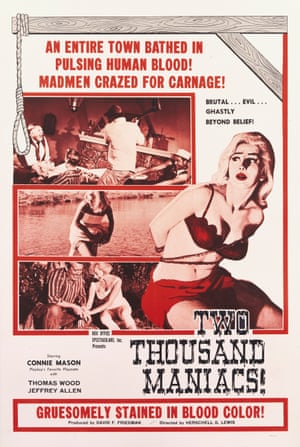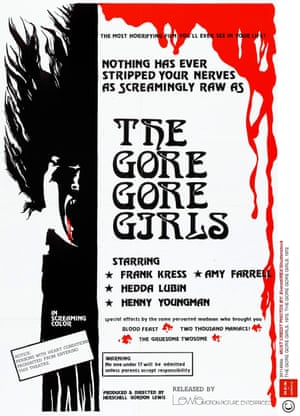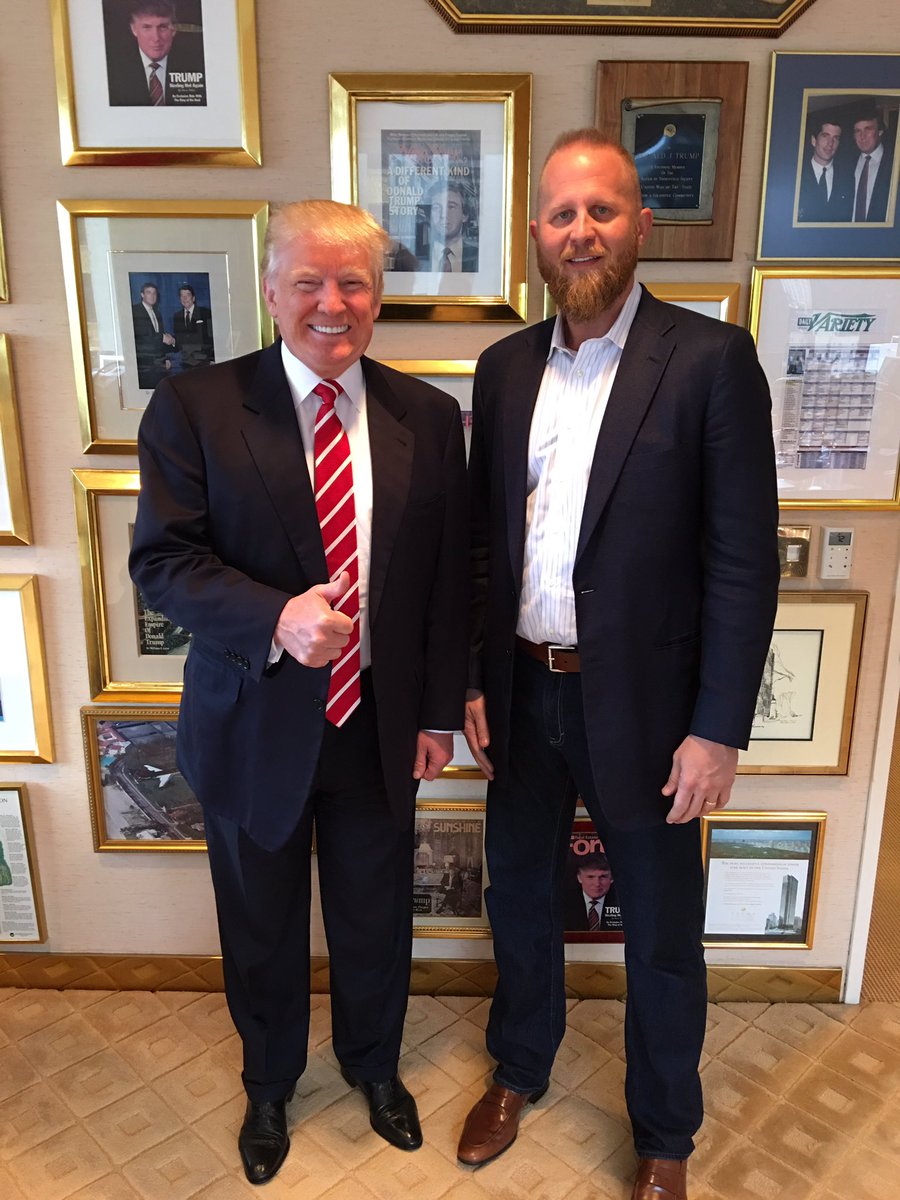Lewis was the master of bargain-basement splatter without whom we would not have the likes of Robert Rodriguez or Quentin Tarantino

One of the most extraordinary figures in the history of popular American moviegoing has departed the stage: film director Herschell Gordon Lewis was the godfather of gore and the sultan of splatter who in the 1960s energetically pushed the envelope of bad taste with low-cost, low-brow schlock-horror exploitation pictures. Lots of blood, lots of screaming, lots of nudity and lots of money.

But he was more than just this. Lewis was a sort of cross between Ed Wood Jr, Roger Corman, Russ Meyer, Dale Carnegie and maybe even Bernie Madoff. Because as well as being a conveyor-belt of trash movies, Lewis was a formidable and unnervingly driven entrepreneur and compulsive wheeler-dealer who did three years jail time in the 1970s for fraud, having conned people through crooked schemes, like a fake car rental company and incredibly a phoney abortion referral service, and for (nearly) all these services he borrowed money from the bank using as collateral the cinemas of which he claimed to be the un-mortgaged owner. It was a breathtaking and crazy illegality, but nothing dented his almost sociopathic self-belief and work ethic. He cranked out dozens of books on direct marketing and salesmanship and to the end of his life kept his focus on this, producing how-to guides on making money from the web. In fact, he may well have seen in the internet the same kind of wild-west, anything-goes spirit that drove him in his film-making heyday.
Lewis came into low-budget movie-making in Chicago from a flourishing career in ad copywriting. After his softcore nudist-camp smutfests like Goldilocks and the Three Bares, Lewis found his true vocation in bargain-basement horror with his pioneering splatter film Blood Feast in 1963, about a cannibalistic caterer who kills women so that he can offer up their cooked remains in horrendous occult rituals. Lewis actually made a sequel in 2002 entitled Blood Feast 2: All U Can Eat a title which had a kind of horrible genius. John Waters was always a fan.

After this, Lewis created A Taste of Blood and The Gruesome Twosome, which cemented his own cult reputation, and he was a master of films which appeared to have been created simply to justify the existence of outrageous titles and delirious posters: The Gore Gore Girls (aka Blood Orgy); Monster A Go-Go; Just for the Hell of It; Bell, Bare and Beautiful; The Ecstasies of Women; Alley Tramp; Sin, Suffer, Repent.
After his brush with the law, Lewis turned his hand to direct marketing and his book titles have a very similar gamey spirit to his mould-breaking splatter: Hot Appeals or Burnt Offerings (surely inspired by his masterpiece Blood Feast?), Sales Letters That Sizzle, and Open Me Now.
Lewis was a one-off, although perhaps his career is maybe a lesson in the fact that cinema has its origins in hucksterism and the fairground tent. But without Lewis, there would be no Robert Rodriguez, no Quentin Tarantino. Respectable cinema entertainment is Dr Jekyll; Herschell Gordon Lewis was its Mr Hyde.













